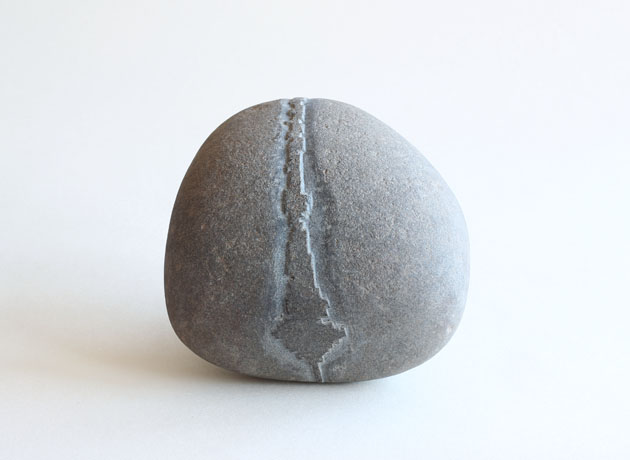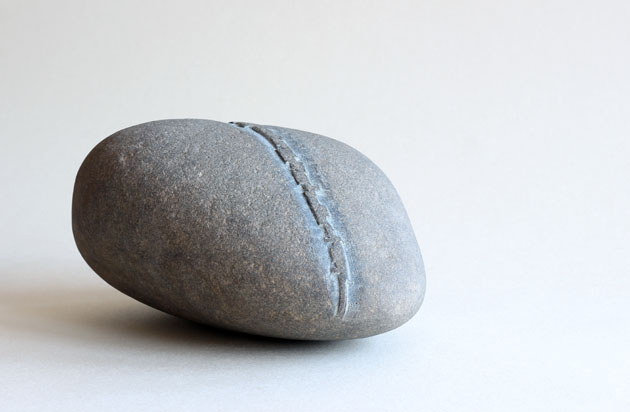The Shape of the Dawn Chorus

Sonogram stone – a pebble carved with the visual representation of the sound of a curlew call
Tomorrow I’m getting up early, really early. Before dawn in fact, as it is International Dawn Chorus Day – a worldwide celebration of nature’s early morning music.
The dawn chorus occurs when songbirds sing at the start of a new day. It tends to be most noticeable in spring, when the birds are either defending a breeding territory or trying to attract a mate.
It starts as early as 3 am, lasting for several hours and it is a time when bird song is louder, livelier and more frequent than during the rest of the day. I plan to record the birds so that I can view later the sound waves – the shape of the chorus. This sonogram*, its rise and fall motif, I will then carve into a piece of stone in the same way as I’ve done this curlew call pebble.

Sonogram stone – a pebble carved with the visual representation of the sound of a curlew calling
It is common for different bird species to do their dawn singing at different times. Studies show that birds perching higher in the trees and birds with larger eyes tend to pipe up first. This correlation may be due to more light being seen from the tree tops, or if you have big eyes.
The most often heard species of birds in the UK dawn chorus, in order of them beginning to sing are Blackbird, Robin, Wren, Tawny Owl, Chaffinch, Pheasant, Warblers, Song Thrush, Greenfinch, Dunnock and Goldfinch.
*A sonogram is a graph representing a sound, showing the distribution of energy at different frequencies, wave cycles of sound per second.
